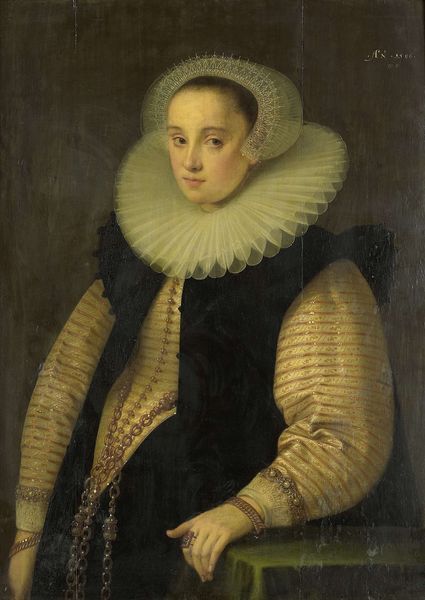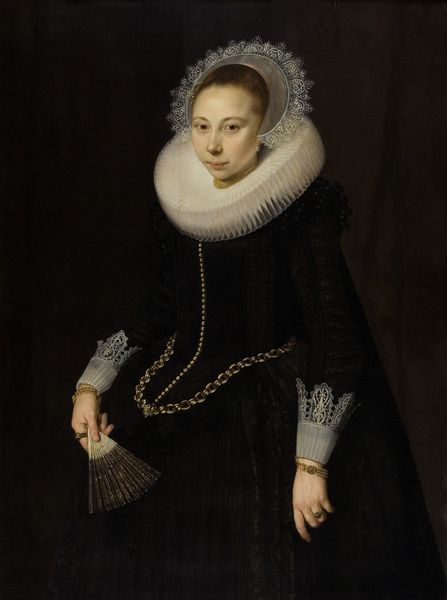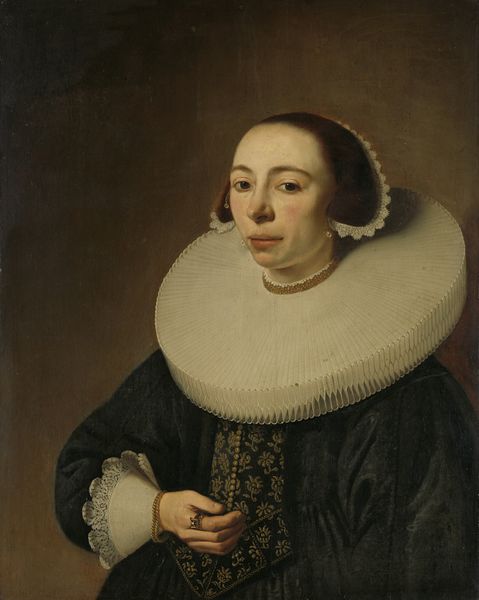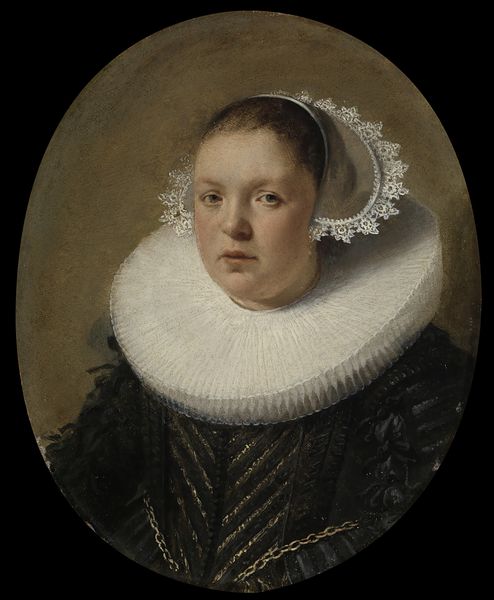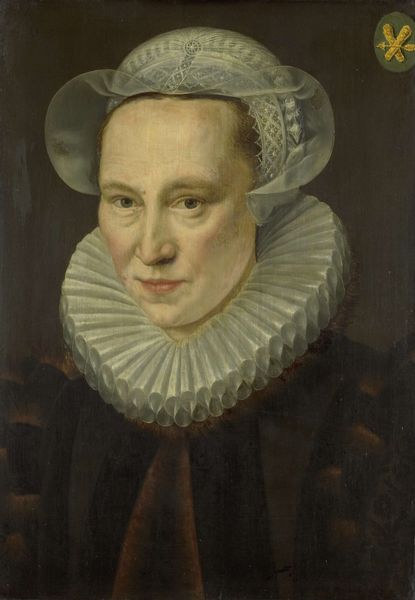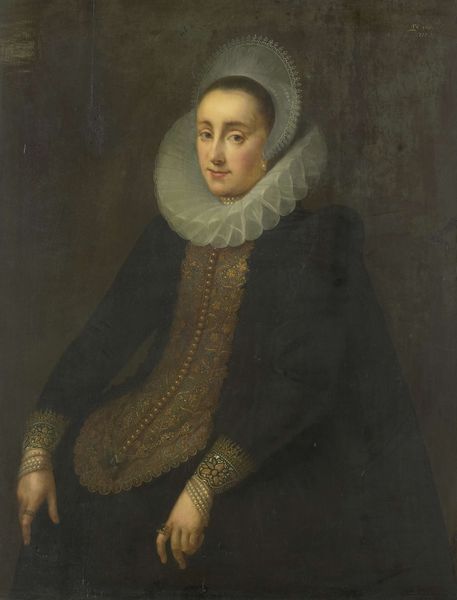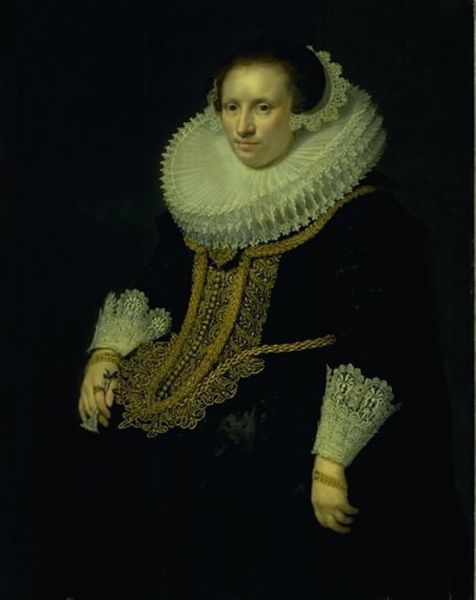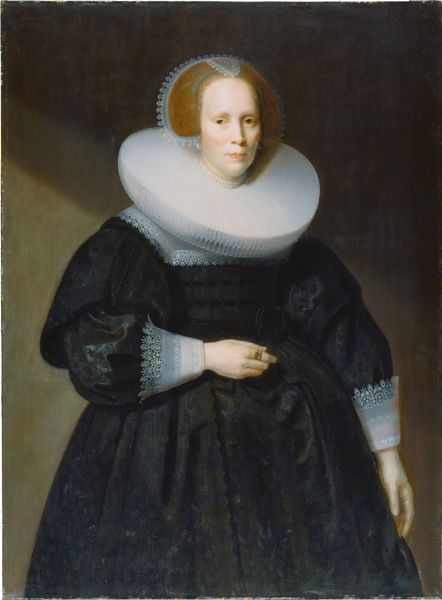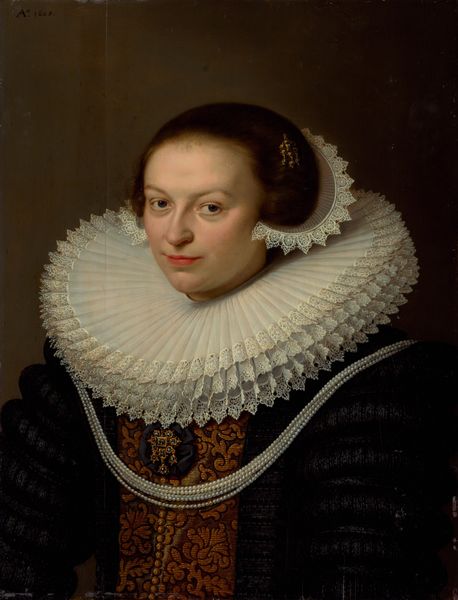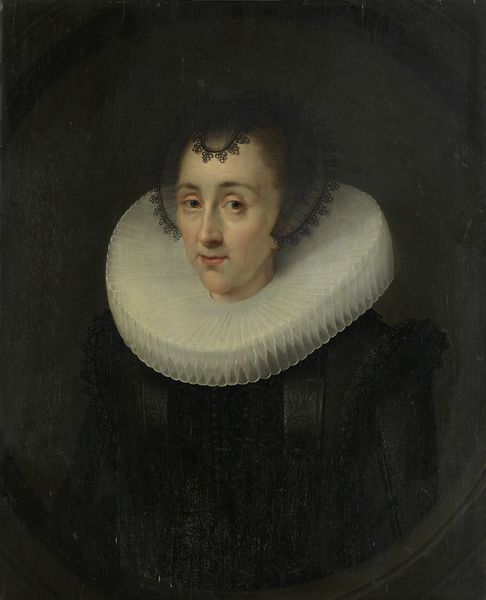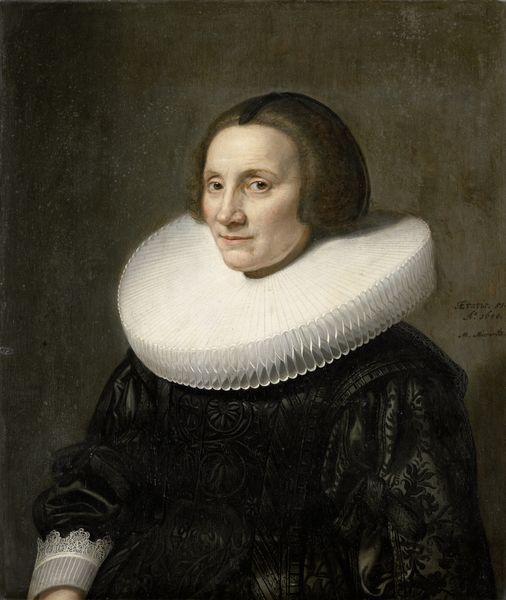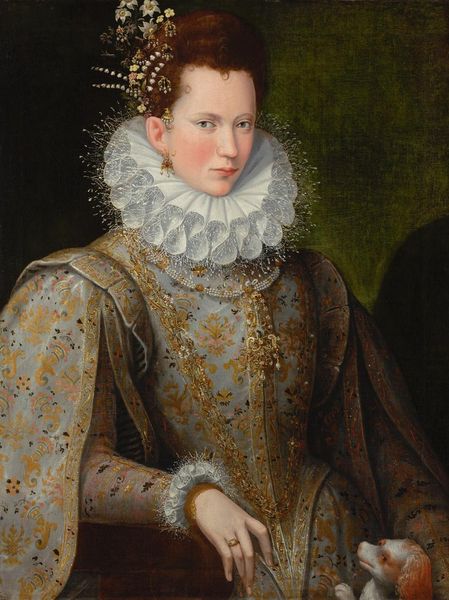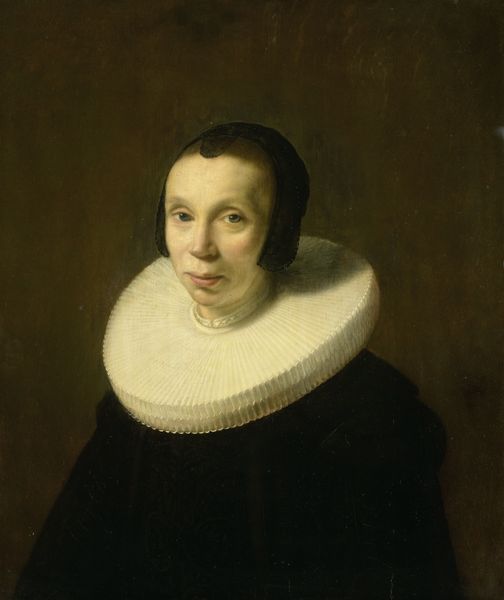
painting, oil-paint
#
portrait
#
painting
#
oil-paint
#
figuration
#
11_renaissance
#
northern-renaissance
Dimensions: height 68 cm, width 52 cm, depth 3 cm
Copyright: Rijks Museum: Open Domain
Gortzius Geldorp painted this portrait of Hortensia del Prado in 1599 using oil on panel. While Geldorp’s brushwork captures Hortensia’s likeness, her garments also speak volumes. Look closely at the lace trim. It is a luxury product, made through skilled handwork, and so signifies the family’s wealth and status. The large ruff is another signifier; it would have been painstakingly constructed, starched, and maintained. It's important to remember the vast amounts of labor involved in the production of clothing during this period. The textiles themselves required agricultural production, processing, and weaving. The construction of garments involved tailors, seamstresses, and lacemakers. Even maintaining clothing required the labor of servants or enslaved people. Considering these factors allows us to see beyond the surface appearance of wealth and status, revealing the complex social and economic systems that underpinned early modern society. The material culture of the past offers a tangible link to understanding the lives and labor of those who came before us.
Comments
No comments
Be the first to comment and join the conversation on the ultimate creative platform.
